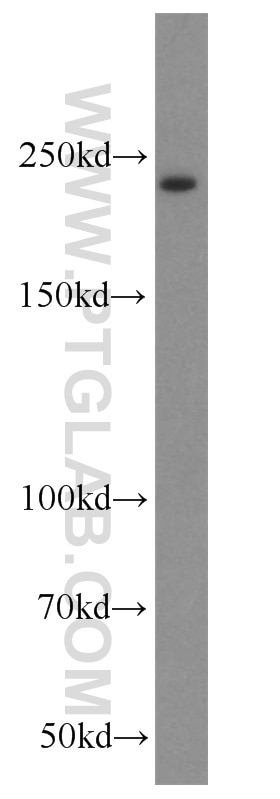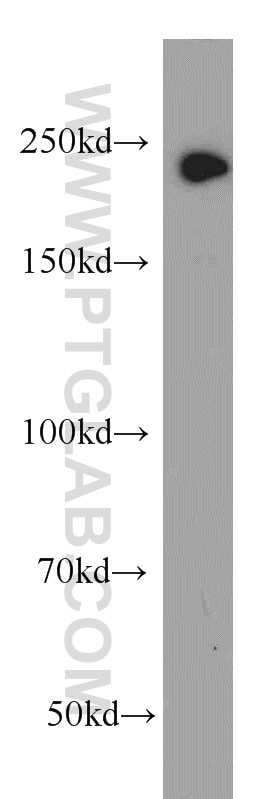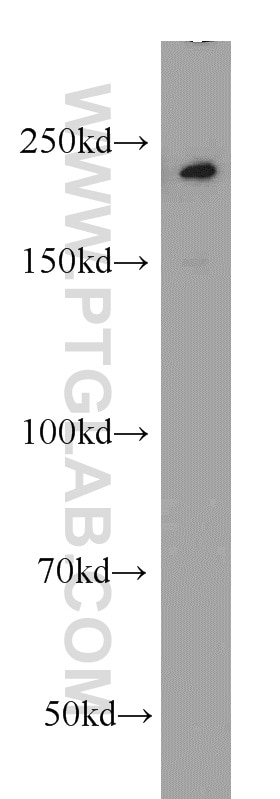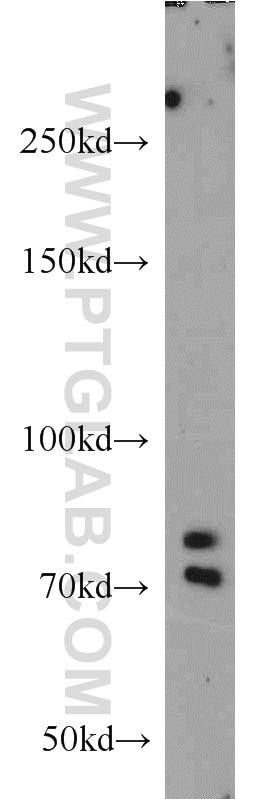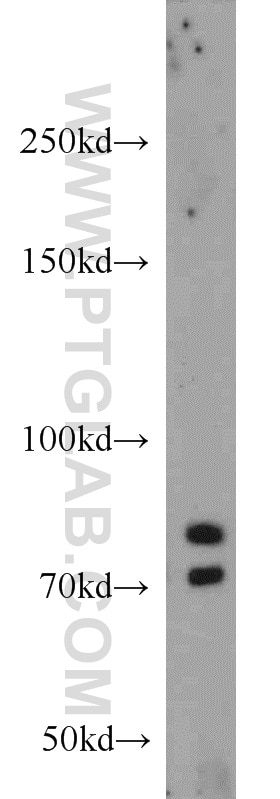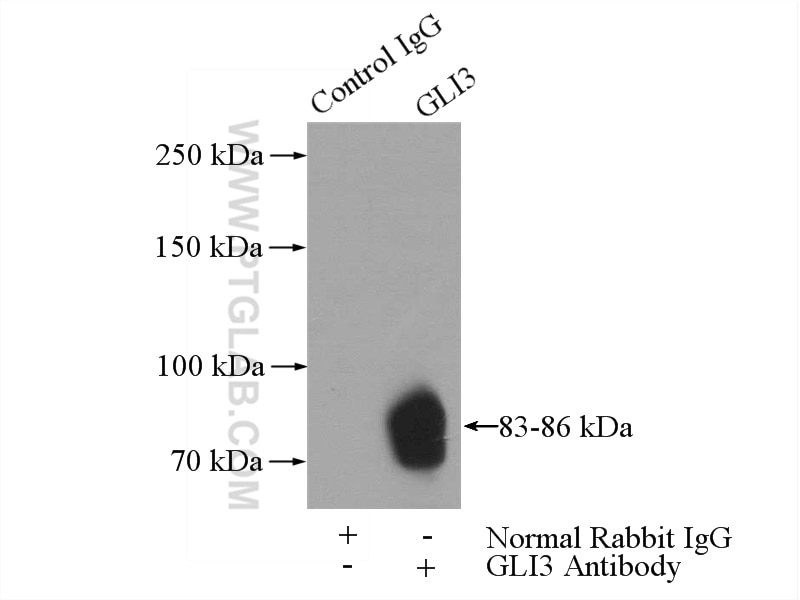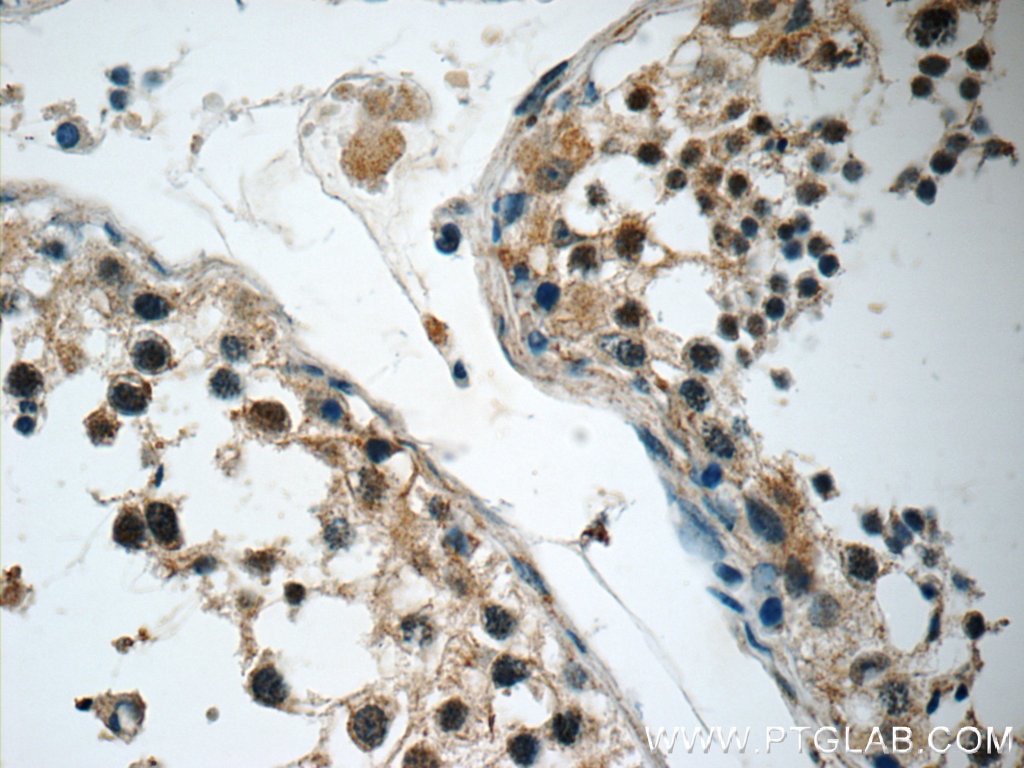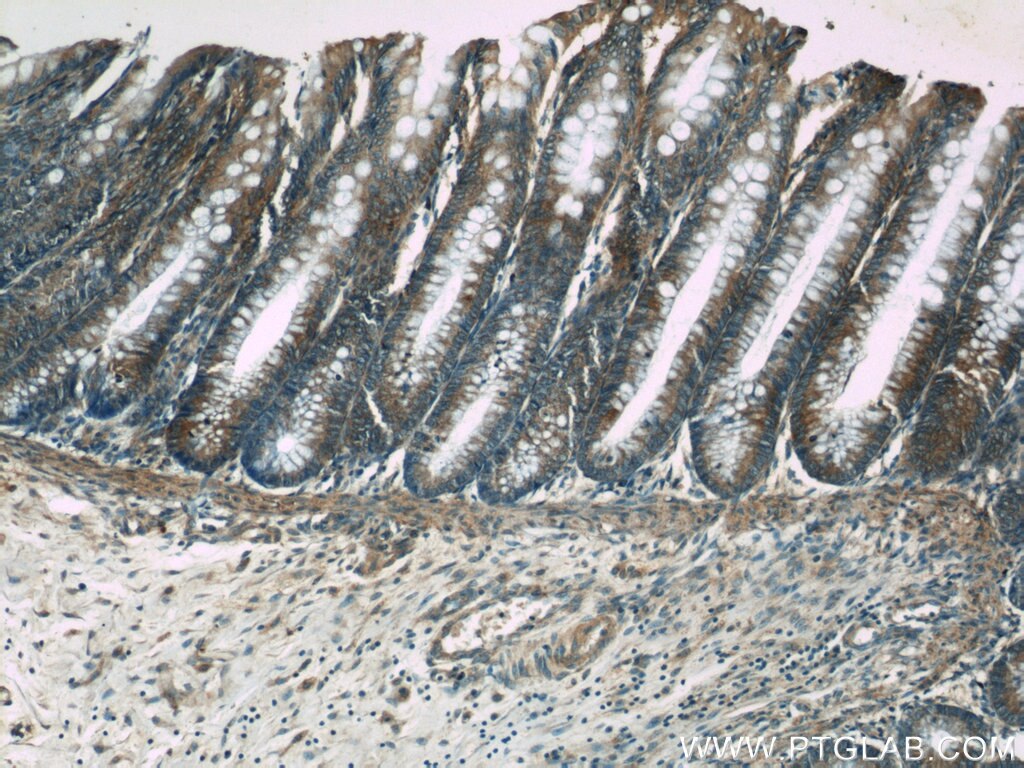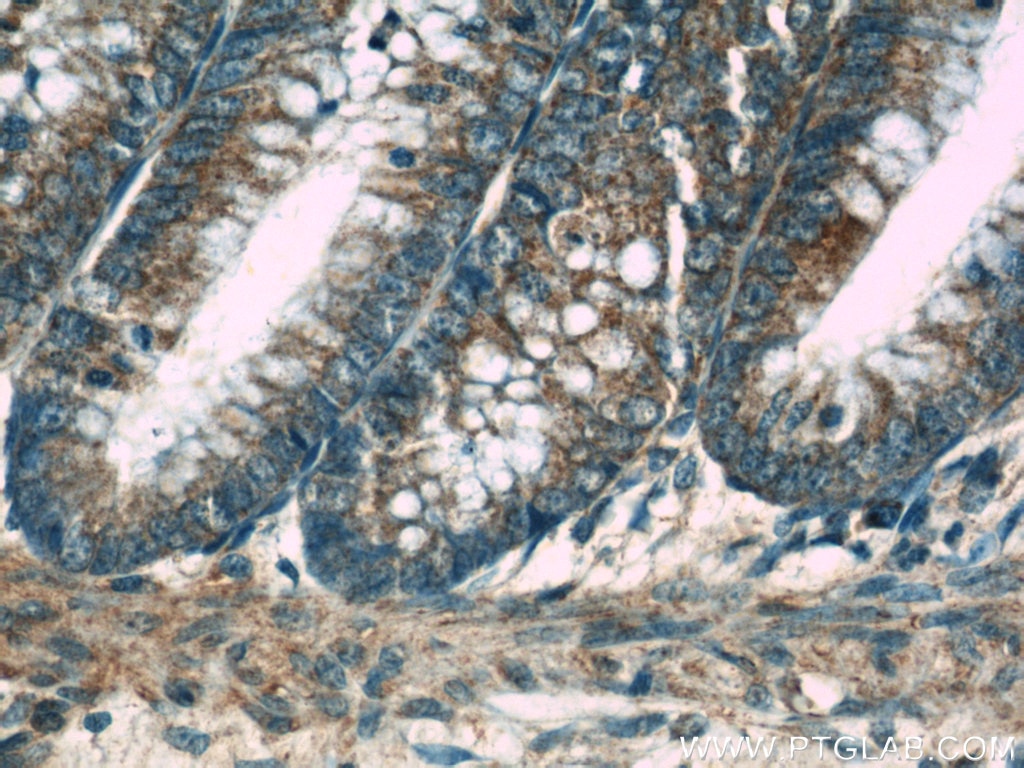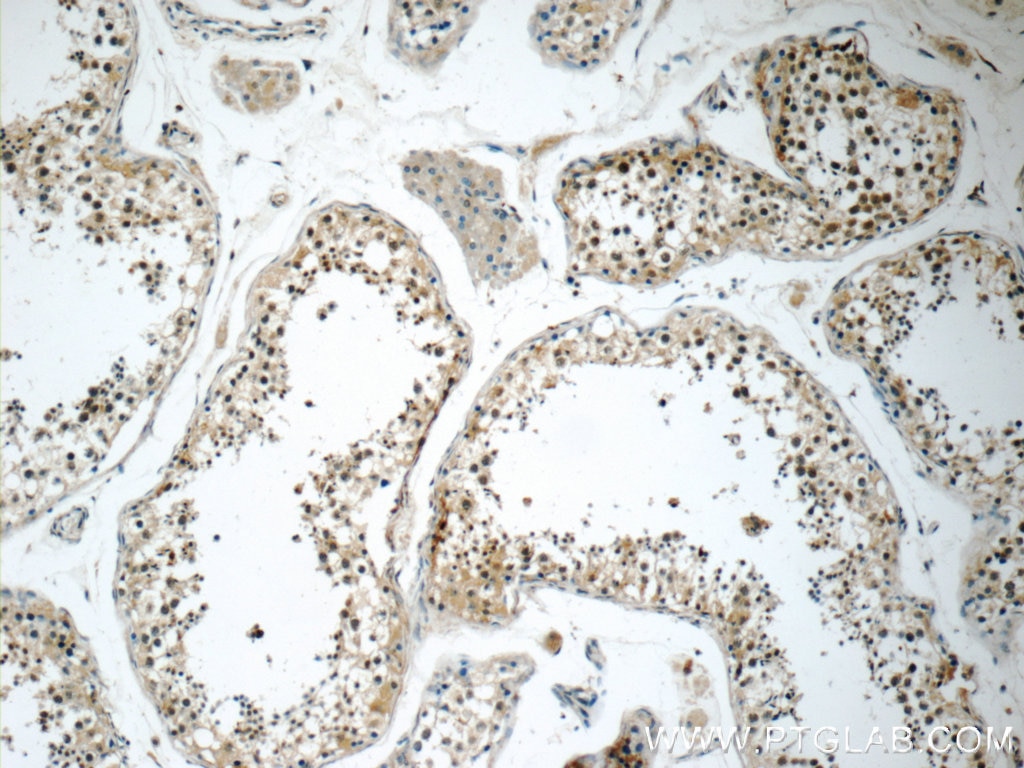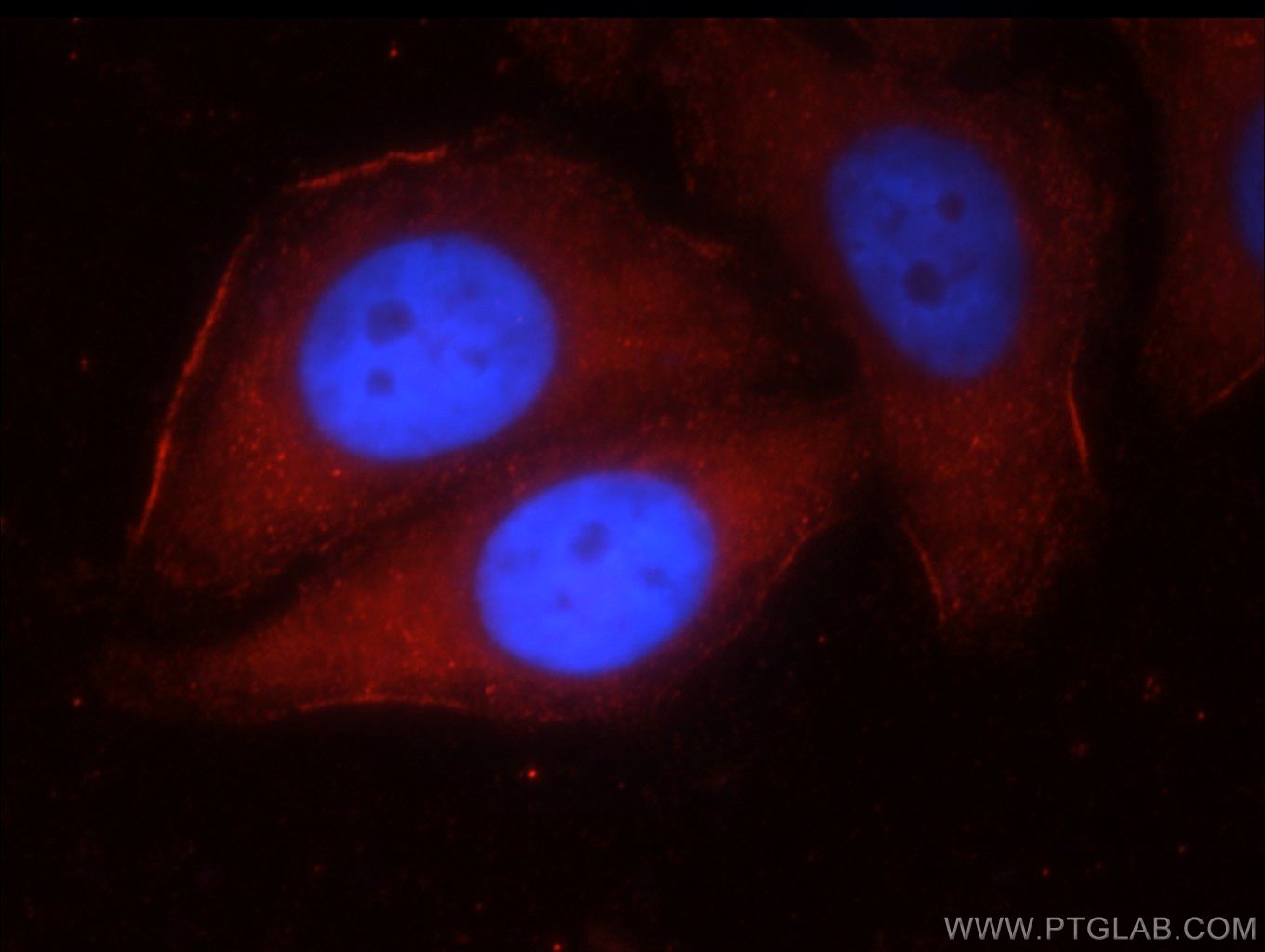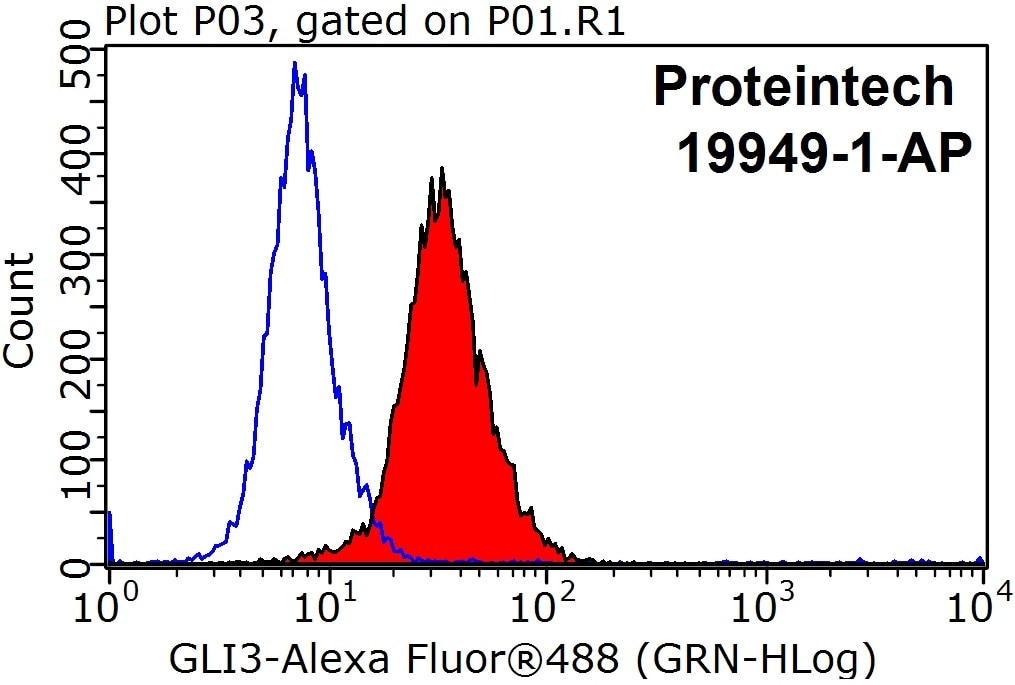GLI3-Specific Polyklonaler Antikörper
GLI3-Specific Polyklonal Antikörper für FC, IF, IHC, IP, WB, ELISA
Wirt / Isotyp
Kaninchen / IgG
Getestete Reaktivität
human, Maus, Ratte
Anwendung
WB, IP, IHC, IF, FC, ELISA
Konjugation
Unkonjugiert
Kat-Nr. : 19949-1-AP
Synonyme
Galerie der Validierungsdaten
Geprüfte Anwendungen
| Erfolgreiche Detektion in WB | humanes Plazenta-Gewebe, Mauslungengewebe |
| Erfolgreiche IP | Mauslungengewebe |
| Erfolgreiche Detektion in IHC | humanes Hodengewebe, humanes Kolongewebe Hinweis: Antigendemaskierung mit TE-Puffer pH 9,0 empfohlen. (*) Wahlweise kann die Antigendemaskierung auch mit Citratpuffer pH 6,0 erfolgen. |
| Erfolgreiche Detektion in IF | HepG2-Zellen |
| Erfolgreiche Detektion in FC | HepG2-Zellen |
Empfohlene Verdünnung
| Anwendung | Verdünnung |
|---|---|
| Western Blot (WB) | WB : 1:200-1:1000 |
| Immunpräzipitation (IP) | IP : 0.5-4.0 ug for 1.0-3.0 mg of total protein lysate |
| Immunhistochemie (IHC) | IHC : 1:20-1:200 |
| Immunfluoreszenz (IF) | IF : 1:10-1:100 |
| Durchflusszytometrie (FC) | FC : 0.20 ug per 10^6 cells in a 100 µl suspension |
| It is recommended that this reagent should be titrated in each testing system to obtain optimal results. | |
| Sample-dependent, check data in validation data gallery | |
Veröffentlichte Anwendungen
| WB | See 12 publications below |
Produktinformation
19949-1-AP bindet in WB, IP, IHC, IF, FC, ELISA GLI3-Specific und zeigt Reaktivität mit human, Maus, Ratten
| Getestete Reaktivität | human, Maus, Ratte |
| In Publikationen genannte Reaktivität | human, Maus |
| Wirt / Isotyp | Kaninchen / IgG |
| Klonalität | Polyklonal |
| Typ | Antikörper |
| Immunogen | Peptid |
| Vollständiger Name | GLI family zinc finger 3 |
| Berechnetes Molekulargewicht | 170 kDa |
| Beobachtetes Molekulargewicht | 190 kDa, 83-86 kDa |
| GenBank-Zugangsnummer | NM_000168 |
| Gene symbol | GLI3 |
| Gene ID (NCBI) | 2737 |
| Konjugation | Unkonjugiert |
| Form | Liquid |
| Reinigungsmethode | Antigen-Affinitätsreinigung |
| Lagerungspuffer | PBS mit 0.02% Natriumazid und 50% Glycerin pH 7.3. |
| Lagerungsbedingungen | Bei -20°C lagern. Nach dem Versand ein Jahr lang stabil Aliquotieren ist bei -20oC Lagerung nicht notwendig. 20ul Größen enthalten 0,1% BSA. |
Hintergrundinformationen
GLI3 belongs to the GLI C2H2-type zinc-finger protein family. GLI3 plays a role in limb and brain development. GLI3 is implicated in the transduction of SHH signal. Defects in GLI3 are the cause of Greig cephalo-poly-syndactyly syndrome (GCPS). Defects in GLI3 are a cause of Pallister-Hall syndrome (PHS). Defects in GLI3 are a cause of type A1/B postaxial polydactyly (PAPA1/PAPB). Defects in GLI3 are a cause of type IV preaxial polydactyly. Defects in GLI3 are the cause of acrocallosal syndrome (ACS). The antibody is specific to GLI3. At the molecular level, Gli3 is translated into a 190-kDa transcriptional activator (Gli3-190) that undergoes proteolytic processing into a truncated 83-kDa repressor (Gli3-83) lacking C-terminal activation domains. (PMID: 16705181)
Protokolle
| Produktspezifische Protokolle | |
|---|---|
| WB protocol for GLI3-Specific antibody 19949-1-AP | Protokoll herunterladen |
| IHC protocol for GLI3-Specific antibody 19949-1-AP | Protokoll herunterladen |
| IF protocol for GLI3-Specific antibody 19949-1-AP | Protokoll herunterladen |
| IP protocol for GLI3-Specific antibody 19949-1-AP | Protokoll herunterladen |
| FC protocol for GLI3-Specific antibody 19949-1-AP | Protokoll herunterladen |
| Standard-Protokolle | |
|---|---|
| Klicken Sie hier, um unsere Standardprotokolle anzuzeigen |
Publikationen
| Species | Application | Title |
|---|---|---|
Nat Commun mTORC1 regulates PTHrP to coordinate chondrocyte growth, proliferation and differentiation. | ||
JCI Insight Mutations in OSBPL2 cause hearing loss associated with primary cilia defects via Sonic Hedgehog signaling. | ||
Acta Pharmacol Sin 1-Indanone retards cyst development in ADPKD mouse model by stabilizing tubulin and down-regulating anterograde transport of cilia | ||
Sci Rep LKB1 Regulates Cerebellar Development by Controlling Sonic Hedgehog-mediated Granule Cell Precursor Proliferation and Granule Cell Migration. | ||
Int J Biol Sci MicroRNA-223 restricts liver fibrosis by inhibiting the TAZ-IHH-GLI2 and PDGF signaling pathways via the crosstalk of multiple liver cell types. |
